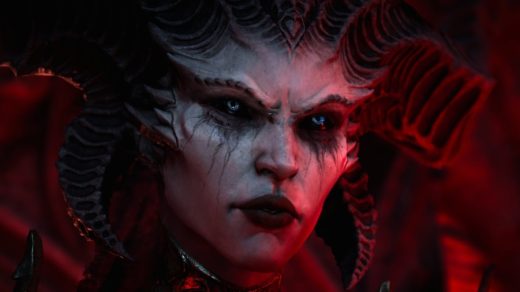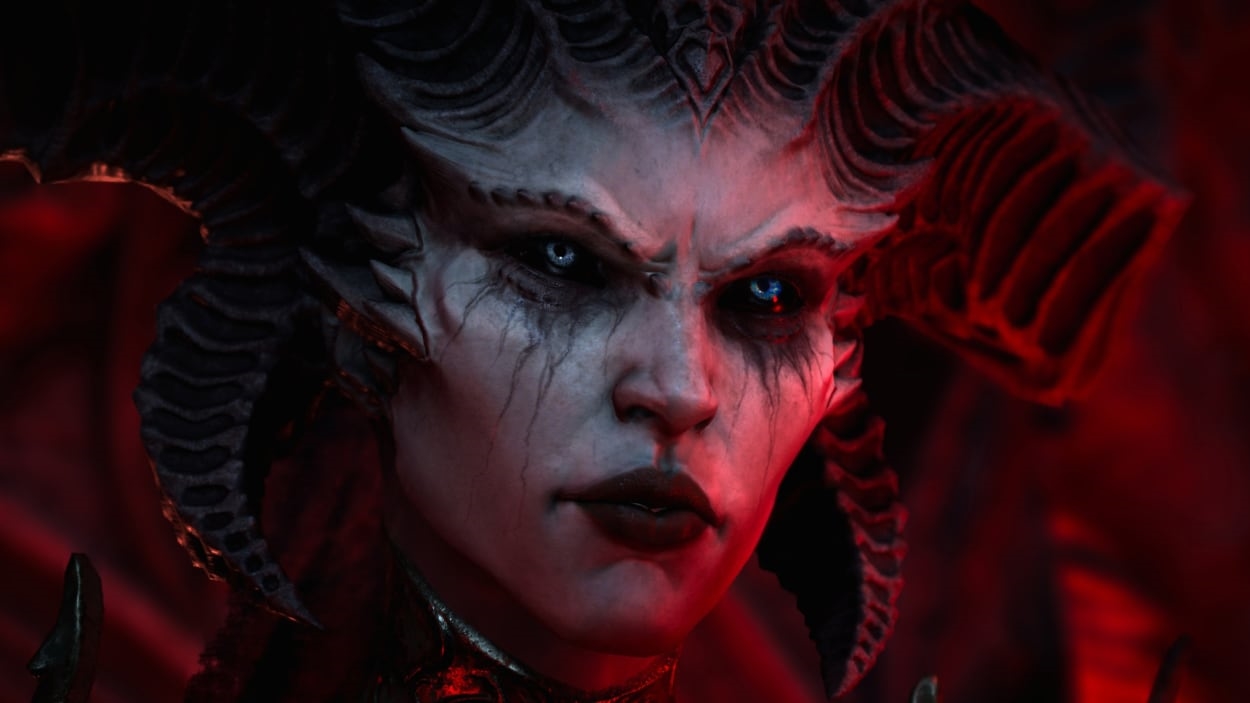How ‘Diablo IV’ evolved into the darkest ‘Diablo’ yet
The year is 1996. The biggest TV show is ER. The biggest website is AOL.com. And Independence Day will top Twister to win the box office.
None of these media properties aged well over the three decades to come. But another 1996 premiere is still going strong: The PC game Diablo, developed by a then-fledgling gaming company called Blizzard, framed players as the demon-slaying protagonist in the war between heaven and hell. (Blizzard only grew and merged in the years since. Microsoft would go on to attempt to acquire Activision Blizzard for $69 billion in 2022 in a deal that’s ongoing.)
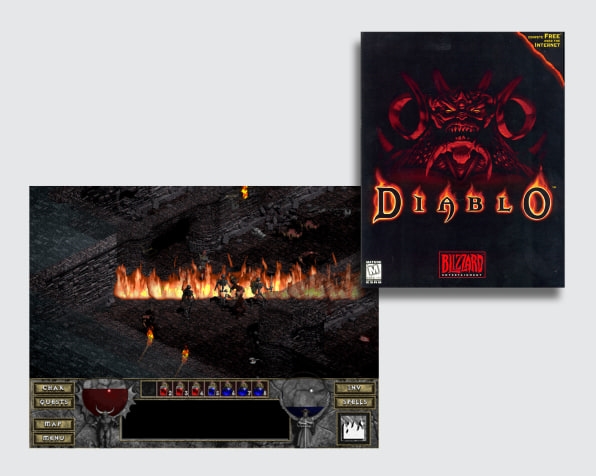
Diablo was followed up by Diablo II (2000) and Diablo III (2012)—the latter of which was played by 65 million people over its decade-long run. And now, Blizzard has just released Diablo IV—its darkest, and most ambitious take on the series yet. Eager fans played 93 million hours of the game in previews before its official launch this week, slaughtering 29 billion monsters in the process.
“How do you sum up Diablo? You’re talking about a franchise that’s been around for 25 years!” says Rod Fergusson, head of franchise on the series. “At its core, if I have to say what Diablo is . . . it’s a hack and slash dungeon crawler, an action role playing game . . . where you get to kill demons and explore.”
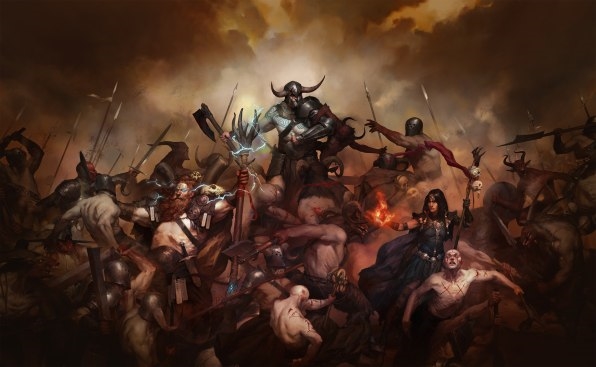
I’d put it a bit differently. With a mouse in your hand, Diablo is about the purest extension of the PC as a video game we have ever seen. You play as a hero, like a barbarian or rogue, facing never-ending waves of demons. But to defeat them, you simply drag your mouse over a bad guy, click, and kill. A pile of gold drops by their side. Maybe a rare new weapon drops, too. What sounds boring in theory becomes a dopamine drip of sheer satisfaction in practice. You fervently swap your weapon out for a new one, and you keep going—a little more powerful, ready to face an even greater challenge.
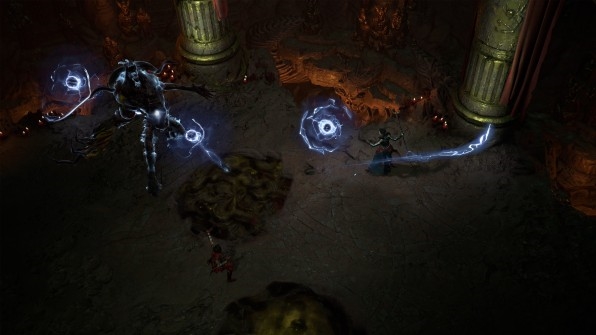
Yet, at no moment when playing Diablo do you forget you are playing a game, or do you cease to relish the mechanisms of what you are playing. No other mega franchise, be it Mario or Call of Duty, feels quite so much to me like software as a constructed object—like a series of miniatures you play with via a mouse or gamepad. And over the last 20 years of development, Diablo has been refined again and again, sometimes for better and sometimes for worse, in an effort of perfecting its machinery to maximize player enjoyment (and corporate profit).
In this sense, Diablo IV is, in many ways, more similar to the ever-shifting design evolution of the iPhone or the F-150 than it is any other game sequel or remake. Yet almost none of the defining elements of Diablo were even part of the original pitch.
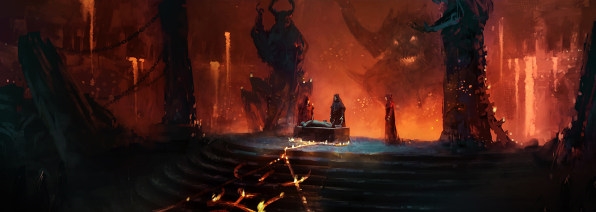
The birth of Diablo
As Allen Adham, Blizzard’s cofounder and chief design officer explains, the first pitch for Diablo was almost indecipherable from the game that followed.
Blizzard had just been acquired by a developer called Davidson and Associates, and leaders asked Adham if there were any other gaming companies the firm should scoop up, too. His mind immediately went to a studio called Condor, which Blizzard had worked with in the past.
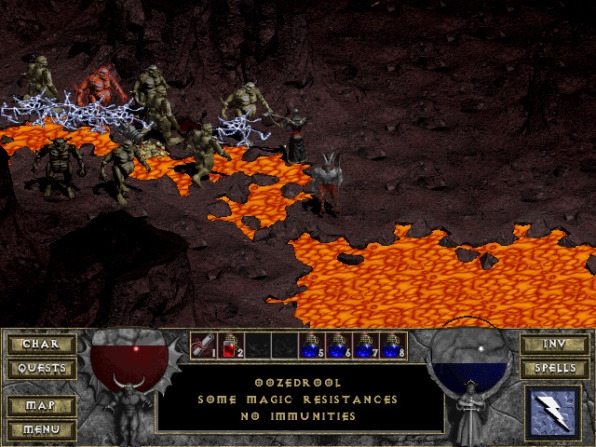
“They were just like us . . . and one of the first companies I called up and said, ‘Hey, here’s the situation. Do you have any cool ideas you could use funding for?” recalls Adham.
The pitch he received was Diablo, albeit mostly unrecognizable from the Diablo that would be made. The creators at first imagined a single-player game, with stop motion graphics that resembled a claymation movie. It was a turn-based role-playing game, meaning it was deliberately slow and plodding.
In the early ’90s, Adham had become one of the hottest designers in gaming by eschewing slow and plodding. His title Warcraft allowed players to control whole armies of humans and orcs fighting one another in real-time battles. The key word there was “real-time.” Warcraft was strategic, but it was also fast—like speed chess playing out in pixels.
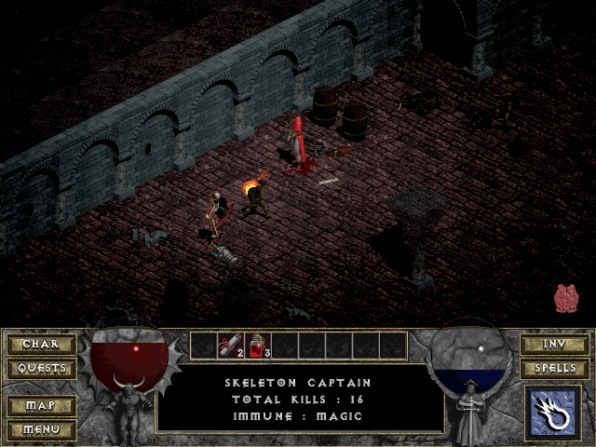
Blizzard suggested to Condor that they could take this same approach with the role-playing game genre with Diablo. Instead of a player sitting and mulling whether it was the right moment to blast that demon with a spell or nail them with the swing of a club, click click click, players would need to make those decisions reflexively with the mouse to survive.
Adham became Diablo’s executive producer (what you might consider a lead designer back then). Condor became Blizzard North. And tens of millions in software sales later, Diablo became one of the most recognizable IPs in the video game business.
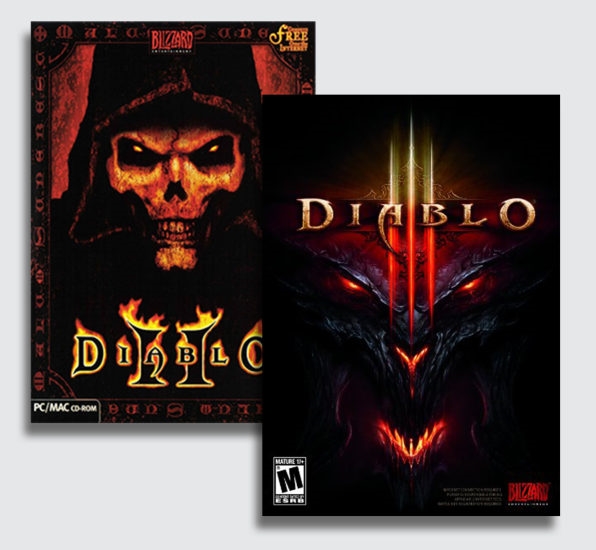
Evolving the franchise
Diablo II followed in 2000. It expanded powers, from simple club swings or fire spells, to complicated skill trees that allowed arrows to split into many, or for necromancers to raise the dead as skeletons. Diablo III arrived in 2012. Now Diablo needed to live on PC and consoles like Xbox. That meant the mouse was no longer the de facto control scheme. Combat became a bit less click-and-kill and more fluid as a result. Healing potions, which players had to guzzle in Diablo II during boss battles, were axed in favor of health orbs on the ground, more like other video games.
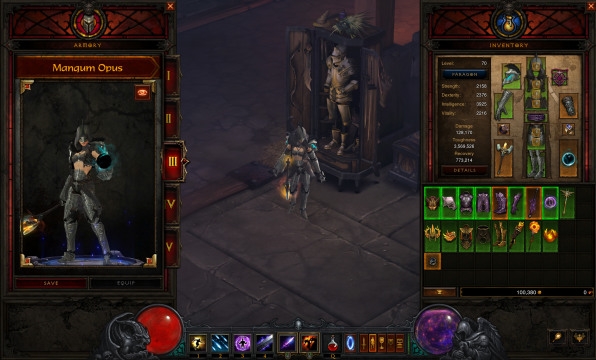
Diablo II probably stole a thousand hours of my life, and while I beat Diablo III at least three times, it never gelled for me. The game was polarizing from the outset, as Blizzard introduced a new auction house where players could sell the weapons they looted for real cash, which Blizzard took a cut of to fund its operations. After fan revolt, Blizzard killed this store and revamped Diablo III over the following decade, leaving most fans pretty satisfied.
“The real money auction house [undercut] the most important part of playing an RPG, which is getting the cool gear,” notes Adham. Click. Kill. Loot. That’s the loop that ultimately drives Diablo, and Blizzard broke it. Adham had left Blizzard before the development of D3, but he returned in 2016 to kick off the development of D4, which he passed along to Rod Fergusson in 2019 to get across the line.
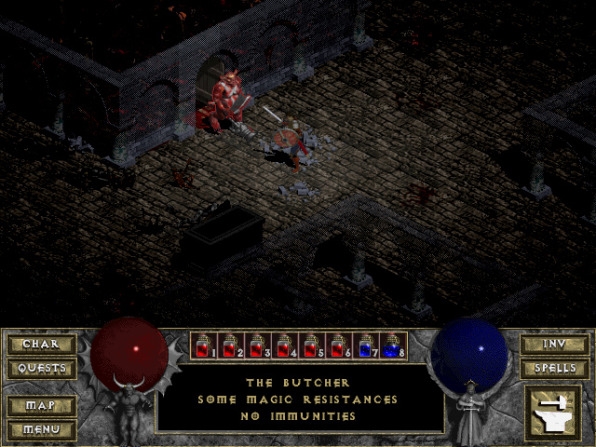
To find its identity again, the team established what it calls the core pillars of Diablo—or little pieces borrowed from each of the Diablo games on the market. Fergusson describes Diablo IV as having the core darkness of Diablo 1. (He reminds me about a character called The Butcher from Diablo I, who would surprise characters and chase them around with a cleaver—which the team reprised as a considerable nemesis for Diablo IV.) It mixes in the skill trees of Diablo II. And it embraces the more fluid action and healing of Diablo III. To ensure the game feels fast, the team even films people playing it in high speed, to check that animations aren’t losing frames and making a quick game feel sluggish.
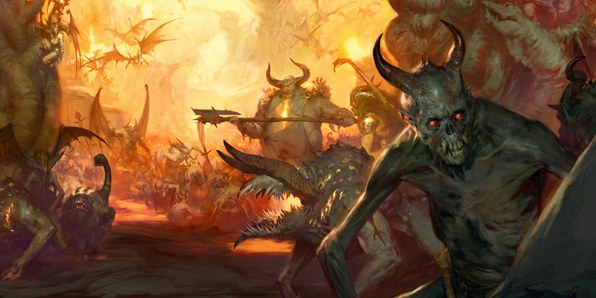
How dark is too dark?
Playing the game for myself, it’s clear how adeptly the team executed this mix. The world itself feels like you’ve stepped into a gothic painting, and its sprawling, procedurally generated (new each time) dungeons flow with an effortless, endless grim.
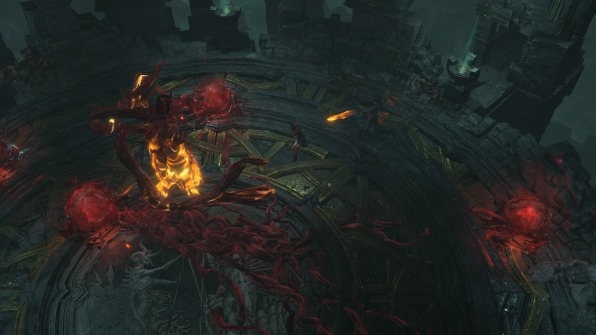
Diablo IV advertises its darker intentions early on. You don’t simply fight demons anymore. You encounter some truly disturbing material, like a possessed mother who attempts to murder her own daughter with blood magic, or a cheating husband who you discover strung up and half dissected by a demon in a bloody S&M ritual. (Even after completing the quest, there is no way to save him. He cries in pleasure and agony any time you pass.)
This darkness is not only thematic; it spills into the core components of gameplay. The mechanics are more grounded and less gamey. Healing doesn’t make “glug glug glug” sounds like it did in the early days of the franchise. Players can no longer walk around in glowing angel wings or have magical pets following them (the latter of which is a mainstay in the genre that can make a battle in the depths of hell feel like a Pokémon cartoon). And the mini-bosses and bosses—the bad guys who are significantly more powerful than their peers—are are no longer highlighted in special colors with the UI to easily identify their threat.
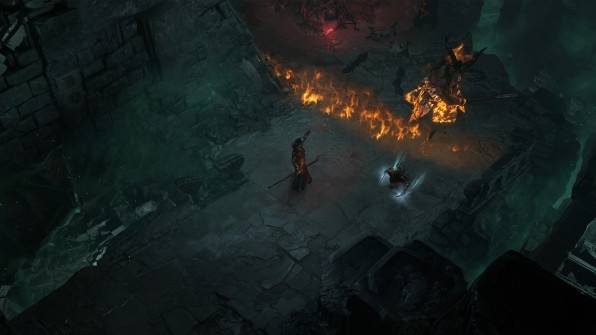
“[Bosses are] less of the loot piñatas they were in the past,” says Fergusson, and mentality carries through to all the enemies you face inside the game. In early Diablos, killing endless waves of a common enemy known as “The Fallen” felt more like whack-a-mole than murder. These red demons appeared rascally in low fidelity, and they dropped giant piles of gold that would clang in your ears. Their deaths were more amusing than disturbing. In Diablo IV, after an exponential curve in graphical fidelity and less zany sound treatments, The Fallen appear far more menacing, and my stomach churns as their bodies are mutilated by my blades in 60 frames per second.
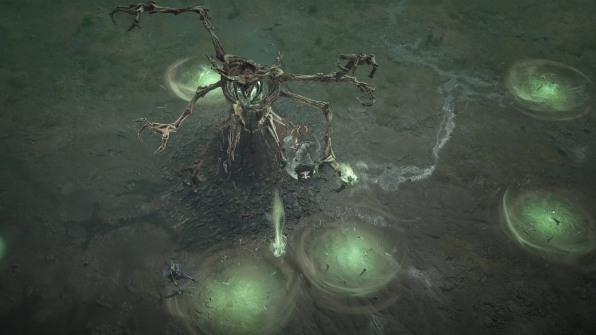
Indeed, while I can appreciate the team’s sharp execution of their premise, I find myself longing for the abstraction of pixels from the ’90s—the same sort of abstraction that made Mortal Kombat’s spine-ripping fatalities cartoonish rather than disquieting.
“By today’s fidelity, if you think how film, books, and TV have changed . . . 30 years ago, there were no Sopranos or Walking Dead. We needed to be wicked and grimy and evil by today’s standards,” says Adham. “We laid that pillar down right at the start, this is going to be a mature game, R-rated . . . these are not things kids can play.”
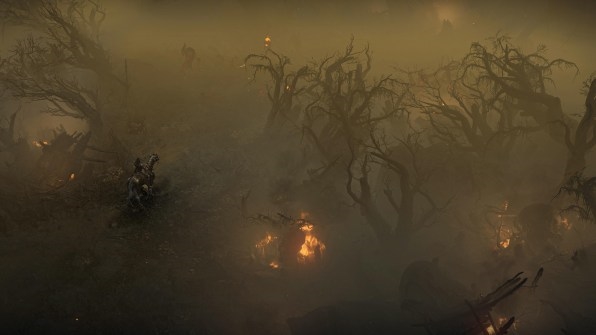
And yet, after tucking the kids in bed, I am sure to load Diablo IV again—and again. I can only hope that, by then, my inner child has also gone to sleep.
(16)

